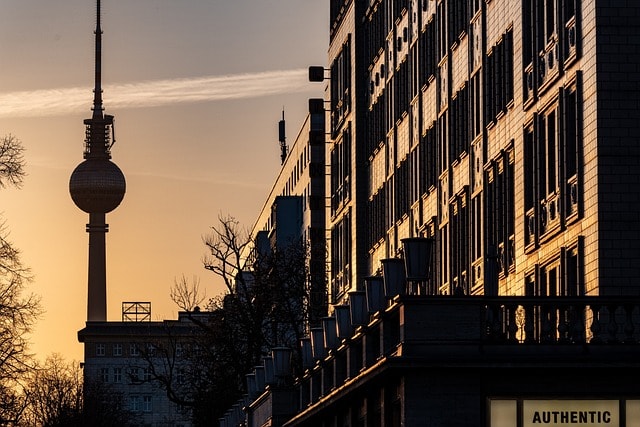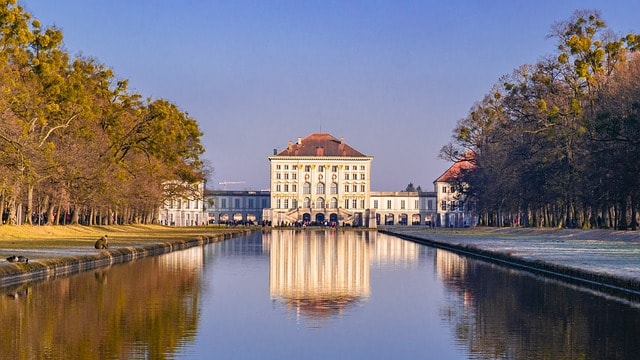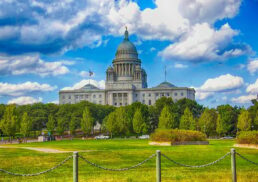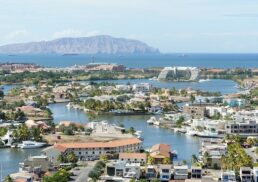Discover the diverse cities of Germany, from Berlin’s vibrant culture to Munich’s historical charm. This guide highlights Germany’s top cities and their unique attractions, offering a comprehensive overview for travelers and enthusiasts alike.
Table of Contents
Key Takeaways
Germany’s largest cities include Berlin, Hamburg, and Munich, each known for their unique cultural and historical significance.
North Rhine Westphalia and Baden Württemberg are highlighted as key regions with vibrant urban life and rich cultural heritage.
A comprehensive dataset detailing Germany’s 129 significant cities is available, offering insights into demographics, infrastructure, and cultural attractions.
Largest Cities in Germany

Germany boasts some of Europe’s largest and most dynamic cities. At the forefront is Berlin, the capital, with around 3.7 million residents in 2023. Berlin, renowned for its rich history and vibrant cultural scene, stands as Germany’s most populous city and a hub for politics, media, and science.
Next is Hamburg, home to approximately 1.9 million people. Its large port, one of Europe’s biggest, has earned it the nickname “Germany’s gateway to the world.”
Munich, Bavaria’s crown jewel, follows with about 1.5 million residents. Its stunning architecture, rich culture, and the famous Oktoberfest highlight its blend of tradition and modernity.
Cologne, with nearly 1.1 million residents, is famed for its cathedral and vibrant arts scene. These large cities, among others, underscore Germany’s rich urban and cultural heritage.
North Rhine Westphalia: Urban Highlights
North Rhine Westphalia, the most populous state in Germany, is a hotspot for urban exploration. The state’s capital, Düsseldorf, is celebrated for its fashion industry and vibrant art scene. Strolling through Düsseldorf, one can feel the pulse of a city that is both cosmopolitan and deeply rooted in its local traditions.
The Ruhr region, historically Germany’s industrial heartland, includes cities like Dortmund and Duisburg. Dortmund’s football legacy and cultural institutions, along with Duisburg’s steel production and inland harbor, highlight the region’s economic diversity.
Beyond industry, North Rhine Westphalia is a cultural and technological hub. The state’s cities are constantly evolving, offering a dynamic and exciting environment for both visitors and residents.
Lower Saxony’s Major Cities
Lower Saxony, rich in history and architectural marvels, features cities like:
Hildesheim, known for its historical significance and well-preserved medieval architecture, including UNESCO World Heritage Sites like Hildesheim’s Cathedral
Osnabrück, which boasts a rich cultural heritage and beautiful historical buildings
Lüneburg, famous for its stunning medieval architecture and salt production history
These cities are renowned for their historical significance and well-preserved medieval architecture.
The old towns of Lüneburg and Goslar, with their charming medieval streets and buildings, offer a glimpse into the past. Each building narrates the rich cultural heritage of the region.
The Fagus factory in Alfeld, a pioneering example of modern industrial architecture, underscores Lower Saxony’s contribution to industrial design. These cities and landmarks make it a fascinating destination for history, architecture, and culture enthusiasts.
Cultural Hubs of Baden Württemberg
Baden Württemberg is celebrated for its cultural vibrancy and heritage. The region comes alive during the holiday season with famous Christmas markets, which enchant visitors of all ages. Esslingen, for example, hosts traditional and medieval markets that draw crowds.
Stuttgart, the capital with around 2.8 million residents, is a major cultural center in Baden Württemberg. Its Christmas market, one of Germany’s largest and most beautiful, adds to its cultural appeal. Ludwigsburg’s market, with stunning decorations, further enhances the festive atmosphere.
Baden Württemberg’s cultural scene extends beyond Christmas. The state hosts various festivals and events year-round, showcasing its rich traditions and artistic expressions, making it a must-visit for culture enthusiasts.
Rhineland Palatinate: Top Towns
Rhineland Palatinate, with its picturesque towns and scenic landscapes, beautifully blends tradition with natural beauty. Koblenz, at the confluence of the Rhine and Mosel rivers, offers stunning views, best enjoyed from a gondola ride over the river.
Marksburg Castle, one of the region’s most impressive landmarks, stands as a testament to the area’s historical and architectural heritage. Its breathtaking views of the surrounding hills and valleys make it a popular tourist destination.
The region is dotted with charming towns, each with unique attractions. Their rich local traditions and scenic beauty make Rhineland Palatinate a captivating destination for those exploring beyond Germany’s major cities.
Saxony Anhalt: Key Cities
Saxony Anhalt, rich in history and culture, features cities that reflect its diverse heritage. Magdeburg, the capital and largest city, is known for its historical landmarks, including the impressive Magdeburg Cathedral.
Halle (Saale), the second-largest city, hosts the state’s largest university, making it an educational and cultural center. Dessau-Roßlau is renowned for cultural sites, particularly those related to the Bauhaus movement.
These cities blend historical significance with modern cultural attractions, making Saxony Anhalt a unique destination.
Berlin: The Capital City

Berlin, Germany’s capital, holds a crucial place in European history. Since becoming the capital of unified Germany in 1871, Berlin has been a central hub for culture, politics, and commerce. Its turbulent history includes events like the construction and fall of the Berlin Wall.
Today, Berlin is Germany’s largest city with over 4.8 million residents. It offers a vibrant nightlife, diverse culinary scene, and numerous cultural attractions. Berlin’s rich history and dynamic present make it a must-visit destination.
Hamburg: The Port City

Hamburg, with about 2.5 million residents, is Germany’s major port city in the north. Known as “Germany’s gateway to the world,” Hamburg’s rich maritime history has shaped its development and significance in international trade.
The city’s resilience and strategic importance were evident during the Thirty Years’ War when it fortified itself to maintain trade activities. Today, Hamburg remains a vital hub for shipping and commerce, significantly contributing to Germany’s economy and cultural landscape.
Munich: Bavaria’s Crown Jewel

Munich, with over 1.1 million residents, is one of Germany’s largest cities and a cultural powerhouse. Its beautiful architecture and vibrant cultural scene, along with the world-famous Oktoberfest, attract millions of visitors annually.
The blend of historical charm and modern amenities makes Munich a top destination for experiencing Bavarian culture and hospitality.
Schleswig Holstein: Urban Centers
Schleswig Holstein, Germany’s northernmost state, is known for its rich maritime history. Cities like Kiel and Lübeck were pivotal in maritime trade during the Hanseatic League’s dominance. Kiel’s significant naval base and shipbuilding industry continue to highlight its maritime importance.
Ports in Schleswig Holstein remain vital for shipping and trade, contributing significantly to the region’s economy. These urban centers offer a unique glimpse into Germany’s maritime heritage and modern economic activities.
Map and Data of German Cities
Germany has 129 significant cities, each documented with detailed data including latitude, longitude, population, and state information. This extensive dataset offers a comprehensive overview of Germany’s urban landscape, valuable for researchers, travelers, and enthusiasts.
The data is accessible and downloadable in formats like CSV, JSON, and XLSX, providing flexibility for various uses. This wealth of information ensures that anyone interested in German cities can find the data they need.
Checkout List of cities and towns in Germany.
Unique Features of German Cities
German cities are renowned for diverse architectural styles, from medieval half-timbered houses to grand Gothic cathedrals. Lower Saxony alone has about 44,000 historical monuments, each telling a story of the region’s rich past. The Weser Renaissance castles, such as Hämelschenburg and Bevern, stand as testaments to historical architecture.
Each German region also boasts distinct culinary specialties, like Bavarian pretzels, Black Forest cake, and various sausages. Cultural festivals, carnivals, and local customs vary significantly between cities, showcasing Germany’s vibrant and diverse cultural fabric.
Numerous museums and cultural events further enrich the cultural landscape, making German cities a treasure trove of experiences.
How to Find Information on Cities in Germany
Finding information on German cities is easier than ever with a variety of online resources. City profiles, government websites, and geographic databases provide extensive details. The Federal Statistical Office offers comprehensive data on demographics, infrastructure, and the economy, providing valuable insights.
Travel guides also offer valuable information, covering major attractions, accommodations, and local tips to enhance the exploration of German cities. Combining online resources and travel guides provides travelers with a holistic view of each city, ensuring an informed visit.
Summary
Germany’s cities are a testament to the country’s rich history, cultural diversity, and economic vitality. From the bustling capital of Berlin to the historic towns of Rhineland Palatinate, each city offers unique experiences and insights into Germany’s soul. These urban centers are not only significant for their populations but also for their contributions to Germany’s cultural and economic landscapes.
As you explore these cities, you’ll discover the vibrant traditions, architectural marvels, and culinary delights that make Germany a fascinating destination. Whether you’re planning a visit or simply seeking to learn more, the cities of Germany promise an enriching and unforgettable experience.
Frequently Asked Questions
What are the largest cities in Germany?
The largest cities in Germany are Berlin, with approximately 3.7 million residents, followed by Hamburg at around 1.9 million, Munich with 1.5 million, and Cologne nearing 1.1 million.
What makes North Rhine Westphalia significant?
North Rhine Westphalia is significant due to its status as the most populous state in Germany, alongside its rich industrial heritage and major cities such as Düsseldorf, Dortmund, and Duisburg.
How can I find detailed information on German cities?
To find detailed information on German cities, consult online databases, government websites, and travel guides that offer in-depth data on demographics, infrastructure, and local attractions. These resources will provide you with the comprehensive details you seek.
What are some unique cultural features of German cities?
German cities stand out for their diverse architectural styles, regional culinary specialties, vibrant cultural festivals, and an abundance of museums, all of which significantly enrich their cultural landscape. These features not only highlight Germany’s rich heritage but also foster a unique urban atmosphere.
What are some key cities in Saxony Anhalt?
Key cities in Saxony-Anhalt are Magdeburg, the capital, Halle (Saale), home to the largest university, and Dessau-Roßlau, recognized for its cultural significance.









